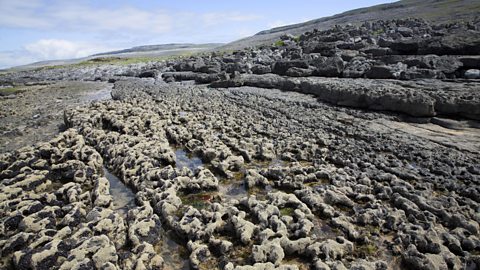Types of weathering
Exposed rocks along the coastline can be broken down by the processes of weathering.
Freeze-thaw weathering
Freeze-thaw weathering occurs when rocks are porous (contain holes) or permeable (allow water to pass through).
- Water enters cracks in the rock.
- When temperatures drop, the water freezes and expands causing the crack to widen.
- The ice melts and water makes its way deeper into the cracks.
- The process repeats itself until the rock splits entirely.
Biological weathering
Plants and animals can also have an effect on rocks. Roots burrow down, weakening the structure of the rock until it breaks away.
- Plant roots can get into small cracks in the rock.
- As the roots grow, the cracks become larger.
- This causes small pieces of rock to break away.
Chemical weathering
Rainwater and seawater can be a weak acid. If a coastline is made up of rocks such as limestone or chalk, over time they can become dissolved by the acid in the water.

Chemically-weathered limestone